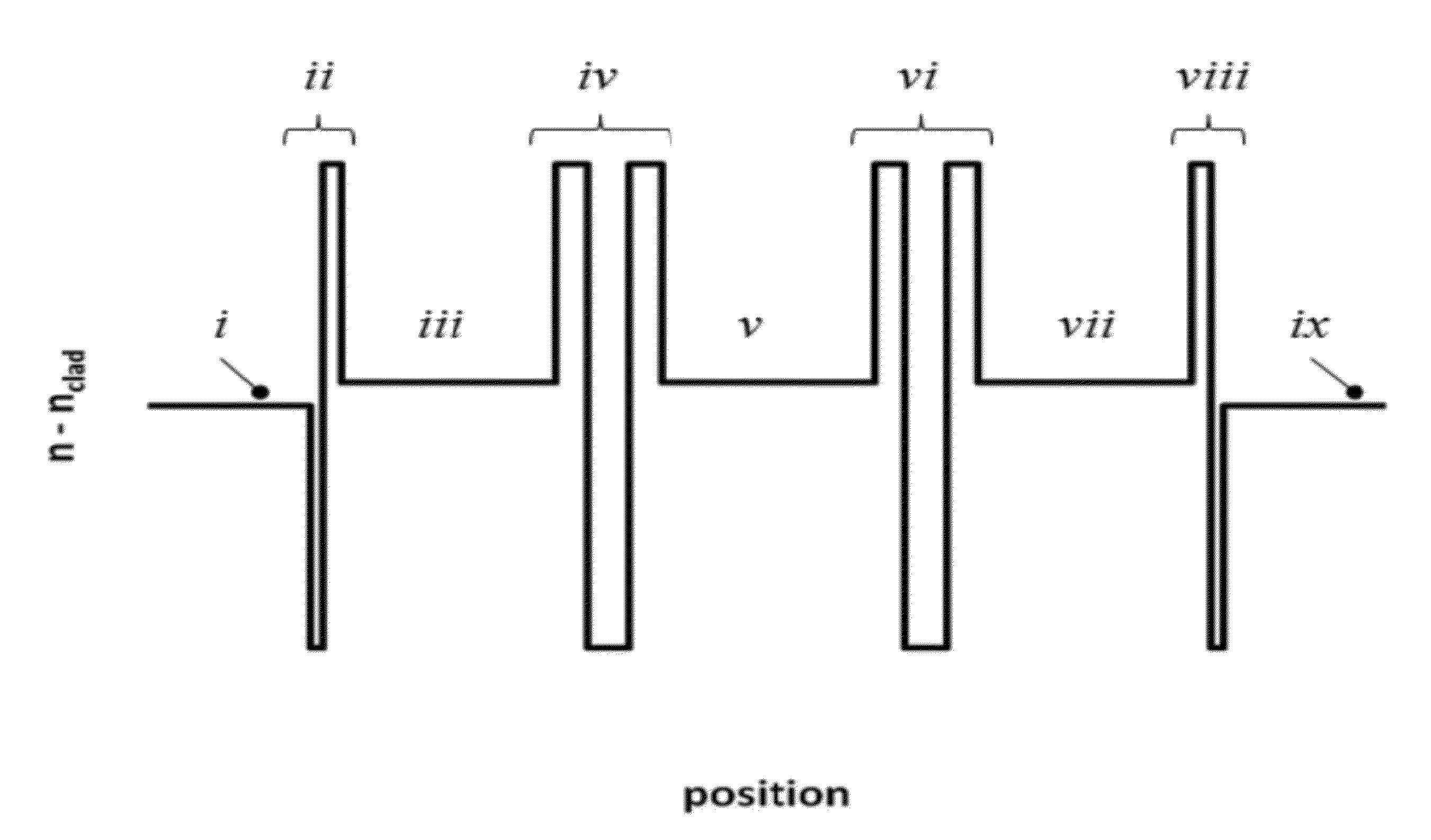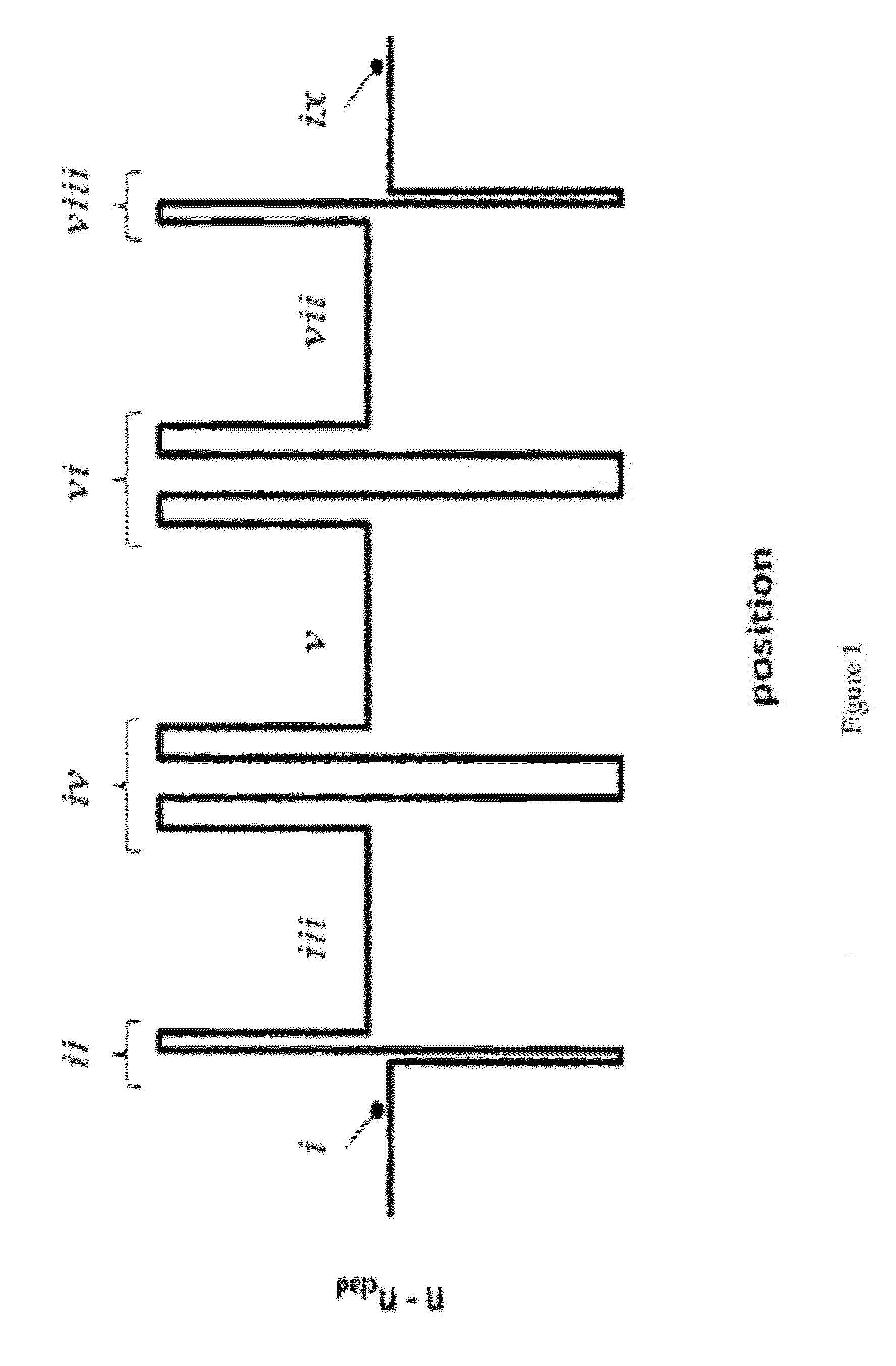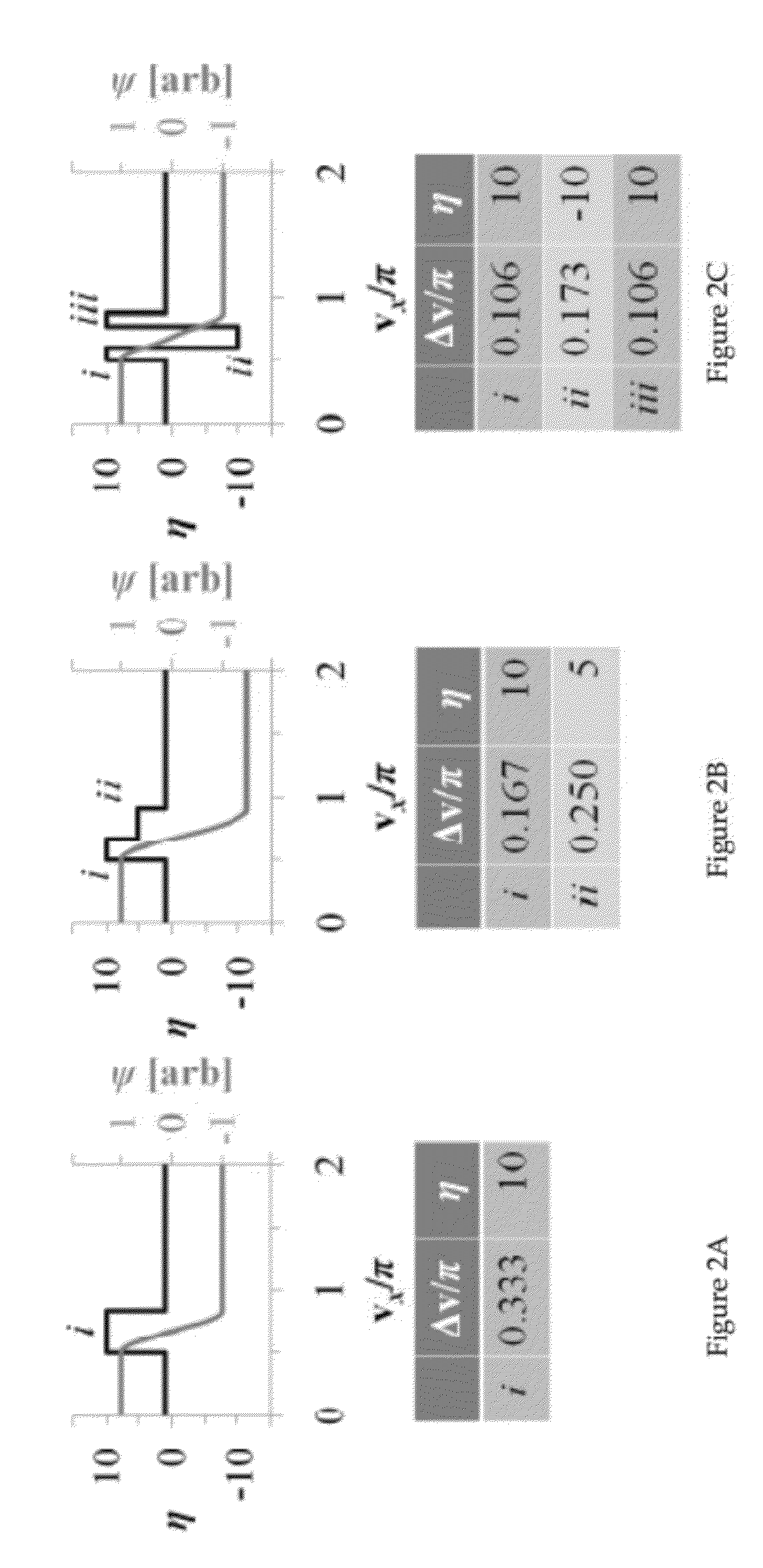Optical waveguides having flattened high order modes
a waveguide and high-order mode technology, applied in the field of waveguides, can solve the problems achieve the effects of waveguide damage, reducing the threshold for undetected nonlinear propagation artifacts, and improving the efficiency of power guide packing
- Summary
- Abstract
- Description
- Claims
- Application Information
AI Technical Summary
Benefits of technology
Problems solved by technology
Method used
Image
Examples
Embodiment Construction
[0034]The present invention reduces the intensity of light propagating in the core of a preselected high-order propagation mode of a waveguide by distributing it more evenly across the guide's cross-section via careful design of the refractive index profile. The resulting high order mode is more robust to perturbation than is the fundamental mode of an equivalent conventional or flattened waveguide, and does not suffer the potentially problematic hot spots of conventional high order mode fibers.
[0035]The waveguides described here are presumed to be made of glass or of a material that allows light to propagate a suitable distance with a suitably low loss to meet the needs of its intended application.
[0036]FIG. 1 illustrates the refractive index profile of a notional waveguide, showing flattening layers, stitching groups, and termination groups.
[0037]In general, the waveguide structure is chosen so that, over selected portions of its cross-section, the local refractive index is equal ...
PUM
| Property | Measurement | Unit |
|---|---|---|
| area | aaaaa | aaaaa |
| refractive index | aaaaa | aaaaa |
| polarity | aaaaa | aaaaa |
Abstract
Description
Claims
Application Information
 Login to View More
Login to View More - R&D
- Intellectual Property
- Life Sciences
- Materials
- Tech Scout
- Unparalleled Data Quality
- Higher Quality Content
- 60% Fewer Hallucinations
Browse by: Latest US Patents, China's latest patents, Technical Efficacy Thesaurus, Application Domain, Technology Topic, Popular Technical Reports.
© 2025 PatSnap. All rights reserved.Legal|Privacy policy|Modern Slavery Act Transparency Statement|Sitemap|About US| Contact US: help@patsnap.com



